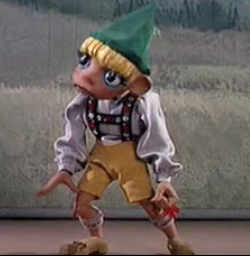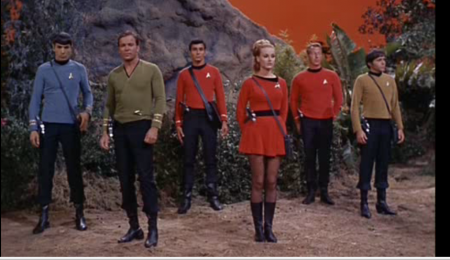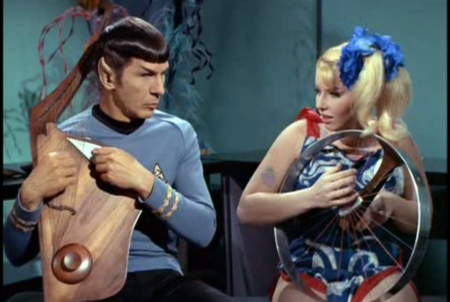I write these words with immense difficulty, and in frantic haste. If what I believe is true, I have little more than an hour, perhaps two, before my mind will lose its moorings, the brain inside my head will be reduced to a twitching jelly of miasmic horror, and I will be a hopeless case, raving and gibbering and throwing myself against the walls of this padded cell. I am confined here upon my own insistence. I had to demand that the lunatic asylum staff lock me up, and keep me locked up. If, in an hour or two’s time, I was free to roam the streets among other men, I shudder to think what unimaginable chaos and havoc would be wrought. No, I must remain here, isolated from a world that must, must be protected at all costs from me …. or rather, from the … thing that I will soon become.
Can it really be only a week ago that I was sitting at home, surrounded by my familiar magnets and retorts and cylinders, in peace and comfort, without a care in the world other than the incessant yapping of my neighbour’s dog and the incessant tinkling of the bell dangling from the collar round my neighbour’s dog’s neck and the incessant ululating incantations of my neighbour himself, incantations devised to summon forth the incarnation of the hideous bat-god Fatso, incantations which, thank the heavens, had proved unsuccessful for twenty years and which, one hoped, would remain unsuccessful for a further twenty years and, indeed, forever after? The yapping and tinkling and ululating aside, I was, as I say, in peace and comfort, and could never have imagined the inexplicable horror that was about to unfold. It has been just one week, but I feel I have lived through a thousand years, nay!, a thousand centuries, a thousand millennia in that time.
It all began, prosaically enough, with the telltale sound of the daily postal delivery dropping onto the mat. I put aside the lemon meringue pie I was eating and went to retrieve it. I flicked briefly through the items: a couple of bills, a letter from my bankers, the latest copy of the Reader’s Digest – I quickly scanned the contents page and made a mental note to read, at the earliest opportunity, the article about bringing a monkey out of a medically-induced coma – a couple of advertising flyers, and – fatefully, as I was to learn – a black envelope, addressed by hand in gleaming silver lettering, bearing a postage stamp which, though I looked at it from every conceivable angle, and then from several inconceivable angles, resisted all attempts to see it clearly. It seemed somehow to shift in shape and colour and size, to become invisible and then visible again. I could not even tell whether it was self-adhesive or had had to be affixed to the envelope with a lick of spittle from a human – or inhuman? – tongue.
Placing the rest of my post in the wicker basket on my escritoire, I returned to the breakfast table, took another mouthful of lemon meringue pie, and opened the envelope carefully. The letter inside was unexpectedly ordinary – a single sheet of white paper, covered in black handwriting of commendable neatness and legibility.
Dear Mr Key, I read, I have long been an admirer of your Hooting Yard weblog and the associated podcasts on Resonance FM. It is an enthusiasm fully shared by my colleagues in the Faculty of Blasphemous and Forbidden Studies at Miskatonic University, Arkham, from where I write this letter. To be wholly accurate, I should say that I am writing from the campus annexe in Innsmouth, where the faculty offices are based. Such is our admiration for you that we wish to issue an invitation. There is work that needs to be done – important and urgent work – and we think you are the man to do it. It is a somewhat delicate matter, and I am reluctant to put the details down in writing – and not merely reluctant. Let us say, rather, that the prospect of committing those details to pen and paper fills me with a terrible, nameless dread. For this reason, I would be grateful if, at your earliest convenience, you would telephone me on the number given below.
The number followed, and the letter was signed – in a florid if shaky hand – by Professor Charles Dexter Nyarlathotep, Dean of Faculty. I immediately picked up my telephone receiver and dialled.
After a few rings, there was a click, as if my call had been answered, but no one seemed to be on the wire, and I was about to hang up when my ear caught a faint suspicion of sound. Was someone trying, under great difficulties, to talk? As I listened, I thought I heard a sort of half-liquid bubbling noise – “glub … glub … glub”- which had an odd suggestion of inarticulate, unintelligible, word and syllable divisions. I called “Is that Professor Nyarlathotep?” but the only answer was “glub-glub …. glub-glub” Then my interlocutor, whoever it was – whatever it was – hung up.
If there is one thing I learned from President Nixon it was the advisability of tape-recording all my conversations. (A second thing I learned from him was to relieve stress by mashing potatoes, but that was not pertinent to the current situation.) I plucked the cassette from the machine and hurried next door. I did not go to my ululating neighbour with the yapping dog and the yapping dog’s tinkling bell, but to my neighbour on the other side. This fellow happened to be an eminent and distinguished retired professor of Comparative and Applied Ichthyolinguistics, and I was certain he would be able to help me to understand the strange sounds from the telephone call. Sure enough, having played the tape back to him, my neighbour was able to make an instant translation.
“I have communed with many fish and other aquatic beings,” he said, “And I recognise this at once as the lingua franca of a particularly hideous and unimaginably horrible spawn of the chthonic depths of the sea, depths so deep that all light is blotted out and the creatures there are grotesque blind albino monsters with writhing flippers. One must listen intently to each ‘glub’ to discern its meaning. In this case, it seems you are being invited to Miskatonic University for the purpose of writing the authorised biography of the mad Arab, Abdul Alhazred, author of the Necronomicon.”
I thanked the professor, gave him the remainder of my lemon meringue pie, returned home, packed a suitcase, and made my way to the railway station, where I caught the next train to Arkham. At Arkham, I would need to change trains to proceed on the branch line to the university campus annexe at Innsmouth. It was a long journey, and I passed the time by reading my xeroxed copy of Ebn Khallikan’s early (12th century) biography of Abdul Alhazred. This was the text that claimed, among other things, that the mad Arab had been seized by an invisible monster in broad daylight and devoured horribly before a large number of fright-frozen witnesses. I did not believe a word of this, nor of much else in the book, and as the train passed through bosky rustic backwaters, I grew confident that, as the authorised biographer, appointed by Miskatonic University, I could do a far better job.
When, eventually, we arrived at Innsmouth, I booked myself into a dilapidated and ill-starred boarding house by the quayside. The landlady was a swarthy, bloated dwarf of cretinous appearance. I suspected she was the product of centuries of inbreeding. When completing the register, she asked me, in her weirdly strangulated guttural caterwaul of a voice, punctuated by almost reptilian hisses, to state the nature of my business. Rather than trusting her with the truth, I claimed to be an aide de camp to President Nixon, scouting possible locations for a branch of his presidential library. She scribbled this into her ledger without comment.
It was late, and I was tired, so I declined the landlady’s offer of supper – which appeared to consist of a bowl full of boiled, writhing tentacles swimming in a mixture of brine and goat’s milk – and I retired to my room. As I opened the door, I reeled and nearly swooned. It was cramped and filthy and the wallpaper depicted ungodly patterns, in colours beyond any spectrum known to human science and lines and shapes of some bizarre, alien geometry. I flung myself on to the fantastically uncomfortable bed and prayed for sleep. For several hours I tossed and turned, but eventually I lost consciousness. How I wish I had not! That night, for the first time since infancy, my dreams were haunted by … the Grunty Man!
Most people of my generation will be familiar with this loathsome monster. It was common, when I was a child, for parents to frighten their children to sleep with spine-tingling tales of this creature, dwelling in a deep dark dank cave, hairy and grunting and covered in sores and suppurating boils, a hideous being older than the universe, older than time and space, grunting, drooling, stinking, and ever prepared to come lumbering out of the maw of his cave to visit unimaginable havoc upon the innocent. He had terrified me as a tiny tot, and he terrified me now, the more so because the nightmare was so inexplicably vivid.
Eventually, mercifully, I awoke from this hideous phantasm. I was twitching and shattered. After cursory ablutions, I went downstairs to the breakfast room. When I saw that breakfast was the same bowl of tentacles as the supper of the night before, I excused myself, and crashed unsteadily out of the door. I decided to head straight for the campus to seek out Professor Nyarlathotep. The sooner I obtained comprehensive details of my commission, and signed a contract, the sooner I could leave this benighted, wretched, vile seaside hellhole.
After a short bus ride to the campus, it was a simple enough matter to locate the Faculty of Blasphemous and Forbidden Studies and, once inside, to find the professor’s office. A young woman was sitting at a desk in the anteroom.
“You must be Mr Key,” she said, “I am Miss Dimity Cashew, the professor’s secretary. I am afraid he is not here right now He is off somewhere or other, consulting an abominable tome written in an unknown and possibly bestial alphabet.”
She was a pallid and asymmetrical figure, with a club foot and one withered leg, a withered arm, several extra fingers on one hand and several fingers missing on the other, eyes of different colours which seemed always to be looking in wildly different directions, and her lank hair was scattered with breadcrumbs and a twig or two. I was transfixed. My dementedly thumping heart seemed ready to burst from my breast. I could barely speak, but I managed to splutter some incoherent words. Dimity agreed to join me for a stroll along the Innsmouth promenade.
It was a whirlwind romance, and five days later we were married in St Bibblybibdib’s church. Only on the morning after our wedding night did I snap out of my lovestruck daze and remember why I had come to Innsmouth in the first place.
“The authorised biography of the mad Arab Abdul Alhazred!” I cried, “I must go to see the professor at once!”
These words had a strange effect on my new bride. Dimity seemed to shrink visibly and clutched desperately at the bedsheets. Already pallid, what little colour there was drained from her face. She shook her head violently, sending twigs and breadcrumbs flying from her lank hair across the room. And then, for the first time since I had met her, both of her eyes swivelled to fix in the same direction, and she looked straight at me.
“For god’s sake!” she screamed, “Phn’glui mglw’nafh! Wgah’fhtagn! The pit of the shoggoths! Down the six thousand steps … the abomination of abominations … I never would let him take me, and then I found myself there! Ia! Shub-Niggurath! The Hooded Thing bleated ‘Kamog! Kamog!’ In the place of utter blasphemy! I can’t stand it! I can’t stand it! My brain! It’s tugging – from beyond – knocking – clawing – Ngr’hfglkhar! The Goat with a Thousand Young! … Oh God!”
Like a fool, I dismissed this as delirium, a fit of the vapours. I told Dimity to have a nice cup of tea and to get some more sleep. And I hurried out towards the faculty office … and, had I but known it, towards my own destruction.
There is little more to tell. I ran to the faculty building and through into the anteroom, past Dimity’s empty desk, until I stood at the professor’s door. I knocked, and heard from inside a weird eldritch unfathomable rustling and panting and … grunting. I threw open the door, and rushed in, and found myself in a room as deep and dark and dank as the cave of the Grunty Man. It was the cave of the Grunty Man! And there, in the Stygian blackness, looming before me, was the Grunty Man himself, in the form of the withered, ancient figure of Professor Nyarlathotep.
“Ah! At last!” he wheezed, “I have been waiting for you. Every ten thousand years, I require a new host body. And here you are!”
And before I had time to scream, or flee, the hideous being shot across the darkness towards me and somehow inserted itself, body and soul, its very being, into me. I felt it settle, adjusting its horrible contours to mine, feeling its way into me, physically and mentally. Desperately, I clung on to a small corner of my brain that remained my own. I have continued to cling to it for as long as I can, but I grow weaker and weaker, and the ‘me’ that clings will soon be no more. That is why I ran as fast as I could to this lunatic asylum and, at gunpoint, demanded to be confined in a padded cell. Its walls and locks will keep humanity safe for a time. But the time will come, years, centuries hence, when the locks will rust and the walls crumble … and then the Grunty Man will lumber forth, in his awful grunting horror, and he shall have dominion over the earth, and all the other planets in all the other universes, forever and ever. I am the Grunty Man!



